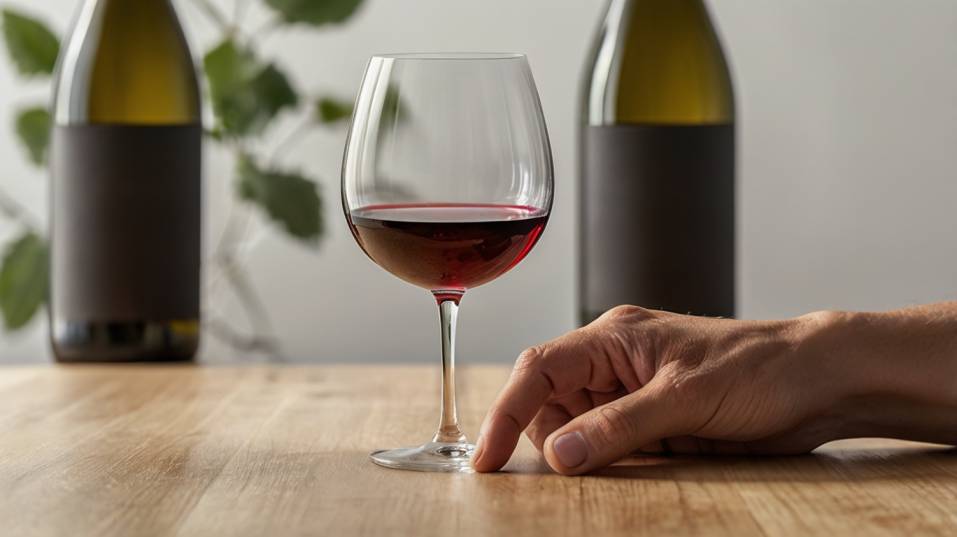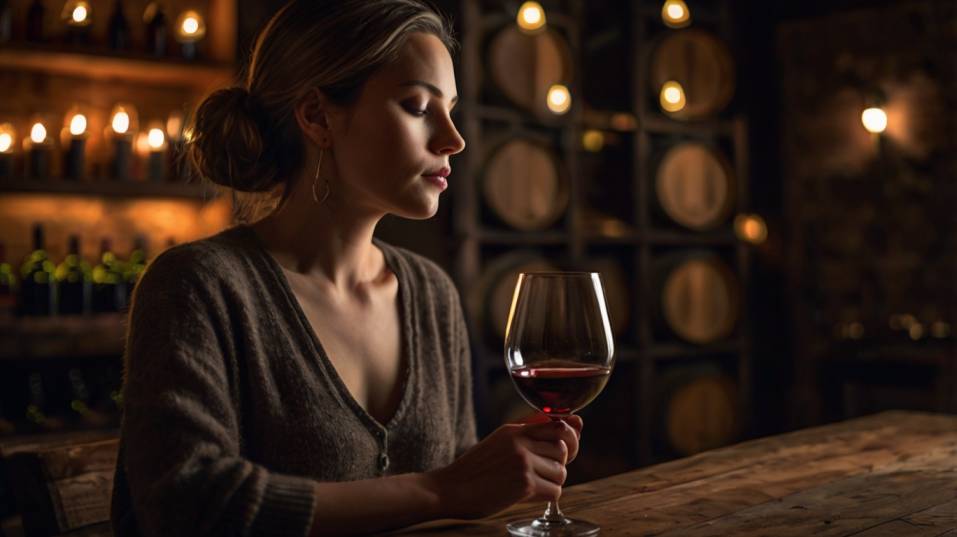A 60-Second Ritual That Enhances Every Glass
A 60-second wine ritual that boosts your tasting skills, sharpens your senses, and builds lasting confidence — one sip at a time.

Ever wonder why one glass of wine feels magical and another forgettable? It’s not just the grape — it’s how you meet it.
Before the first sip, a simple 60-second ritual can shift your entire tasting experience. No tools, no jargon — just focus.
This isn’t about being fancy. It’s about being present. Because when you tune in, wine opens up. Here’s how one minute can change the way you taste forever.
Step One: See It Before You Taste It
Your first impression of wine shouldn’t come from the taste. It should come from the glass itself.
Hold it up to the light. Tilt it slightly over a neutral background — a white napkin, the back of your hand, a light wood table. What do you notice? Bright lemon-gold?
Pale rose quartz? Deep garnet? These aren’t just pretty colors — they’re signals. A pale white might point to something light-bodied, with crisp acidity.
A richer gold suggests more ripeness, possibly time in oak or bottle age. A dense red with a blue-purple hue? Likely young, fruit-forward, maybe fuller in structure.
Clarity matters too. A clear wine indicates precision in winemaking. A hazy or cloudy appearance might be intentional — or not. Either way, noticing it gets you closer to understanding what’s in your glass.
And watch how it moves. The way wine clings to the sides of the glass — what people sometimes call “legs” — isn’t just for show.
It reflects alcohol, viscosity, and texture. You don’t need to analyze it every time, but if you want to connect taste to feel, these visual cues are a useful place to start.

Step Two: Breathe In Deep — Twice
If you only smell a wine once, you're missing its full range. Aroma unfolds in layers — the first sniff often brings surface notes, while the second reveals deeper structure.
So pause, bring the glass to your nose, and take two slow inhales. One to register what’s obvious. Another to discover what’s not.
Most of what you taste is actually smell. Your nose catches volatile aromatic compounds that your tongue never will — things like ripe peach, green bell pepper, black peppercorn, cedar, violet, flint.
Even if you can’t name them yet, you're still learning what complexity smells like. Over time, those vague impressions become more specific.
That’s how trained palates develop: not by memorizing tasting wheels, but by paying attention repeatedly.
And if the aromas feel faint? Give it a swirl. Swirling isn’t just theater — it lets oxygen interact with the wine, unlocking compounds that have been sealed away.
One or two circles is enough. Then smell again. Good wines reward this kind of patience with more detail, more contrast, more clarity.
Step Three: Sip — But Don’t Rush to Judge
That first sip isn’t the moment for conclusions. It’s the start of calibration. Your mouth is adjusting — to temperature, acidity, tannin, and alcohol. Let the wine coat your tongue. Breathe through your nose as it lingers.
Instead of trying to name flavors right away, ask simpler questions: Is it bright or soft? Sharp or smooth? Does it lean more savory or more sweet? Is there a texture you can feel — chalky, oily, dry?
These tactile sensations are just as important as flavor. They tell you about winemaking choices, climate, even grape variety.
And over time, they'll help you recognize the style of wines you prefer — not based on the label, but on what your senses tell you.
If the wine feels unbalanced at first — too bitter, too tart, too hot — don’t give up. Some wines need a moment. Acidity softens, tannins mellow, fruit wakes up. That’s why the second sip matters.
Step Four: Revisit — The Second Sip Is the Real Test
The second sip is where tasting becomes understanding. Now your palate is in tune. You’re not surprised by the acid or the alcohol. You’re ready to pay attention to development — how the wine moves, shifts, and finishes.
Do the flavors change from start to finish? Does something new emerge after a few seconds? Or does the wine feel flat, one-dimensional, already fading?
This is where great wines separate themselves. Not always by intensity — but by character. A wine with depth will reveal layers: fruit, then spice, then a lingering minerality or herbal note you didn’t catch before.
A wine without it might taste fine, but feel short, or thin, or clumsy. Neither is wrong. But when you notice the difference, you’re tasting like someone who understands wine — not just drinks it.
The Ritual Becomes the Reward
What begins as a 60-second routine becomes second nature. You stop drinking wine on autopilot. You stop leaning on vague labels or reviews. You start trusting your own senses — sight, smell, taste, feel. And that trust builds confidence.
Confidence makes it easier to choose wines you’ll actually enjoy. It sharpens your questions when you’re buying. It helps you explore regions, grapes, and producers with curiosity instead of intimidation.
And perhaps most importantly — it makes wine more fun. Because the more present you are, the more flavor you find. The more flavor you find, the more every bottle becomes an experience, not just a beverage.
Final Thoughts
There’s no shortcut to wine confidence — but there is a ritual. A simple, thoughtful minute that prepares you to taste better, choose smarter, and enjoy more deeply.
So next time you pour a glass, don’t skip the pause. Look closely. Smell twice. Sip slowly. Then sip again. That’s where the real story starts.
Try it tonight. Grab a bottle, take the full minute — and meet the wine with attention. You’ll be amazed what you start to taste.




